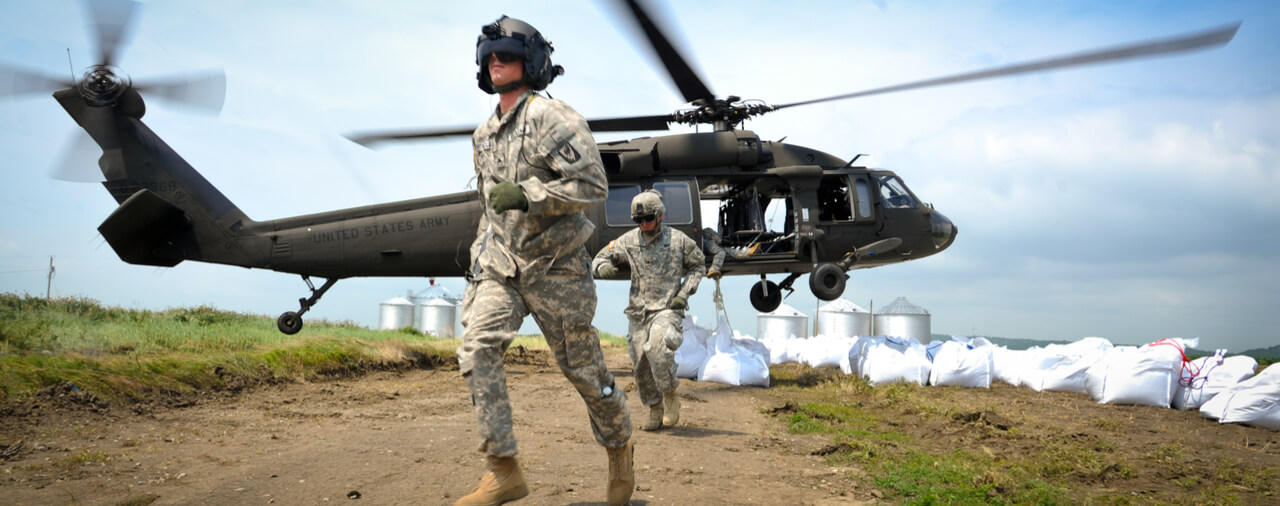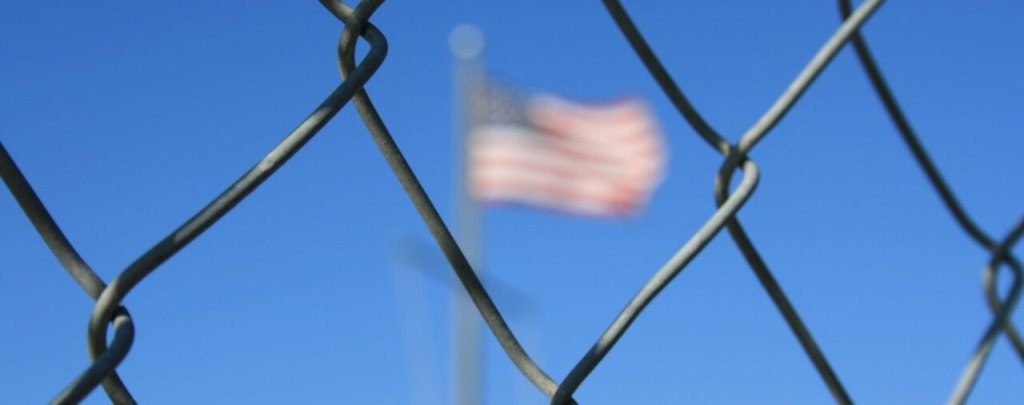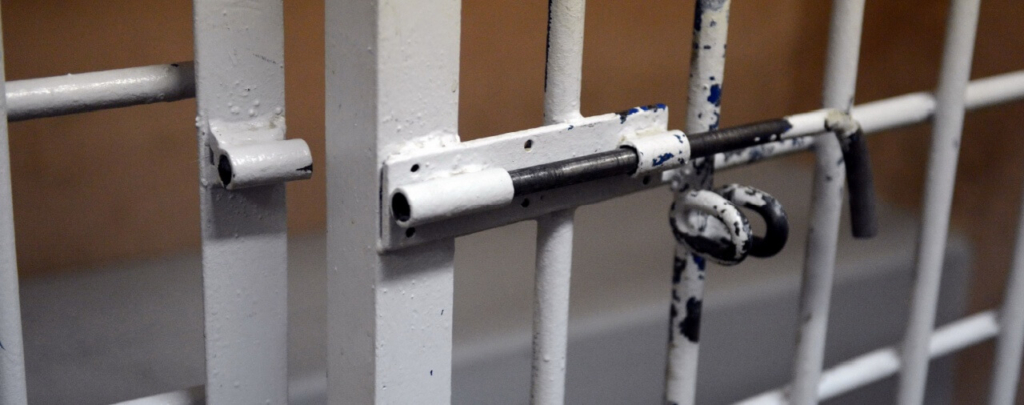Introduction
On March 4, 2018, President Donald Trump issued a Presidential Memorandum for the Secretary of Defense, the Attorney General, and the Secretary of Homeland Security titled “Securing the Southern Border of the United States” [PDF version]. The Memorandum directs the Secretary of Defense to request States to summon the National Guard to assist in securing the border. In this post, we will briefly explain the background of the decision and what it means as policy.
Reasoning for the Decision
President Trump began the Memorandum by providing background for the decision to request use of the National Guard.
He began by noting that “[t]he security of the United States is imperiled by a drastic surge of illegal activity on the southern border.” Among the types of illegal activity, President Trump listed drug trafficking, gang activity (specifically MS-13), and illegal border crossings more generally. He stated that these illegal activities “not only threatens our safety but also undermines the rule of law.” He also reiterated the theme of American sovereignty, stating that “[a] key and undeniable attribute of a sovereign nation is the ability to control who and what enters its territory.”
In explaining his view on the need to request the National Guard, President Trump stated that “[t]he situation at the border has now reached a point of crisis,” imperiling both the United States and officers and agents of the U.S. Customs and Border Protection (CBP) tasked with border security.
President Trump stated that the Department of Defense “currently assists other nations in many respects, including assisting with border security, but the highest sovereign duty of the President is to defend this Nation, which includes the defense of our borders.” To this effect, he stated that, as President, he has the authority to “assign a mission to the Secretary of Defense to support the operations of the Department of Homeland Security in securing our southern border, including by requesting use of the National Guard…” He added that this step had previously been taken by former Presidents George W. Bush and Barack Obama.
Directive
President Trump directed the Secretary of Defense to support the Department of Homeland Security in securing the southern border. He also tasked the Secretary of Defense with “taking other necessary actions to stop the flow of deadly drugs and other contraband, gang members and other criminals, and illegal aliens into this country.” To accomplish these goals, President Trump directed the Secretary of Defense to request use of National Guard personnel in accordance with 32 U.S.C. 502, and to use any other authorities he deems appropriate in a manner consistent with U.S. law.
In order to assist the Secretary Defense in this mission, President Trump directed the Secretary of Homeland Security to “work with the Secretary of Defense to provide any training or instruction necessary for any military personnel, including National Guard units, to effectively support Department of Homeland Security personnel in securing the border.”
President Trump directed the Secretary of Defense, the Secretary of Homeland Security, and the Attorney General “to determine what other resources and actions are necessary to protect our southern border, including Federal law enforcement and United States military resources.” These officials are directed to submit to President Trump “a report detailing their findings and an action plan” within 30 days of the issuance of the Memorandum.
Finally, President Trump declared that any prior proclamations, memoranda, or Executive Orders that are inconsistent with the instant Memorandum are superseded to the extent of such inconsistency.
Analysis
The Memorandum itself directs the Secretary of Defense to request the use of National Guard personnel from States in order to assist in securing the border and further directs the Secretary of Defense, the Secretary of Homeland Security, and the Attorney General to present the President with an “action plan” within 30 days. The Memorandum itself does not include many specifics, and it is likely that we will not have an understanding of its potential effects until the promulgation of the joint-agency plan.
Although the Memorandum does not address it, it is important to note that National Guard members are limited in the activities they are permitted to undertake in the furtherance of border security and law enforcement. Specifically, National Guard members are not permitted to actually arrest individuals on the border. Accordingly, in previous deployments during the Bush and Obama Administrations, National Guard members were limited to assisting CBP agents and officers in surveillance and other logistical matters.
News and Notes
In an interview on March 5, 2018, President Trump stated that he hoped to send 2,000 to 4,000 National Guard members to assist in securing the border.1 However, other Government officials, including Secretary of Homeland Security Kirstjen Nielsen, have stated that the actual anticipated number is unclear for the time being.
Thus far, several Republican Governors, including three border-state Governors, have announced their support for President Trump’s decision and their intention to cooperate. Governor Greg Abbot of Texas noted that Texas already maintains National Guard personnel and State troopers on the border, and that “Texas will continue to implement robust border security efforts” and work with the Federal Government [PDF version]. Governor Doug Ducey of Arizona welcomed the proposed deployment and stated that he has already been in touch with the Secretary of Homeland Security about how Arizona “will cooperate fully with the administration on this effort” [PDF version]. New Mexico Governor Susana Martinez stated that she supports the decision to have National Guard troops assist with border security.2 Governors Asa Hutchinson of Arkansas and Kim Reynolds of Iowa have also stated that they will commit National Guard troops if asked.3
Interestingly, California Governor Jerry Brown, who has generally disagreed strongly with the immigration enforcement policies of the Trump Administration, did not foreclose the possibility that California will cooperate with the request for National Guard support.4 However, he stated that he would need to learn more about the request, including its intended duration, funding, and whether there are “clearly definable objectives.”5
Conclusion
The full scope of the request for National Guard troops on the border remains uncertain until the report of the Secretary of Defense, Secretary of Homeland Security, and the Attorney General is complete. Regardless of the details, the move does not represent any change in the immigration laws. Instead, it is intended to help the CBP apprehend both illegal border crossers and narcotics along the Southern border. Whether it is ultimately successful in stemming the recent uptick in illegal border crossings remains to be seen.
- Lajeunesse, William. “National Guard will only play supporting role to agents at the border.” Fox News. Apr. 5, 2018. http://www.foxnews.com/us/2018/04/05/national-guard-will-only-play-supporting-role-to-agents-at-border.amp.html
- Associated Press. “The Latest: Iowa governor would send troops to Mexico border.” WFTV9. Apr. 5, 2018. http://amp.wftv.com/www.wftv.com/www.wftv.com/news/national-news/ap-top-news/the-latest-trump-wants-to-send-up-to-4000-troops-to-border/727737169
- Id.
- Id.
- Id.





